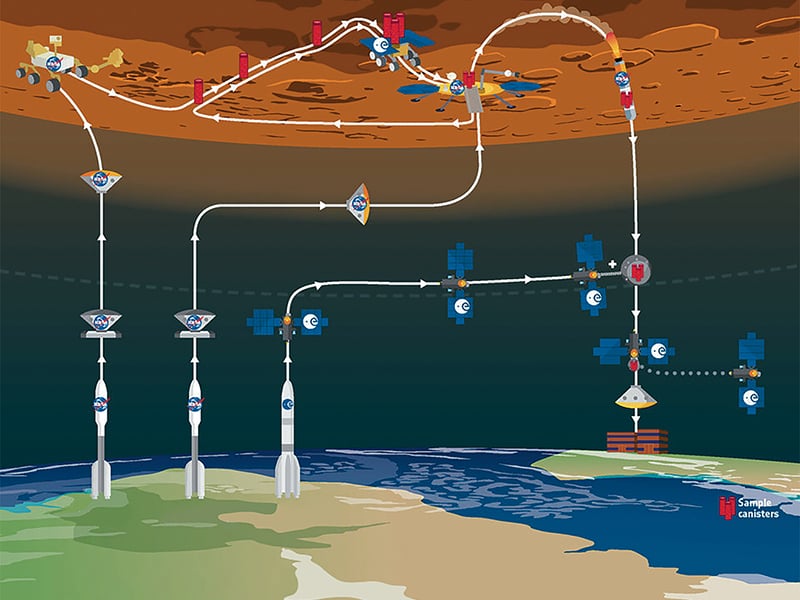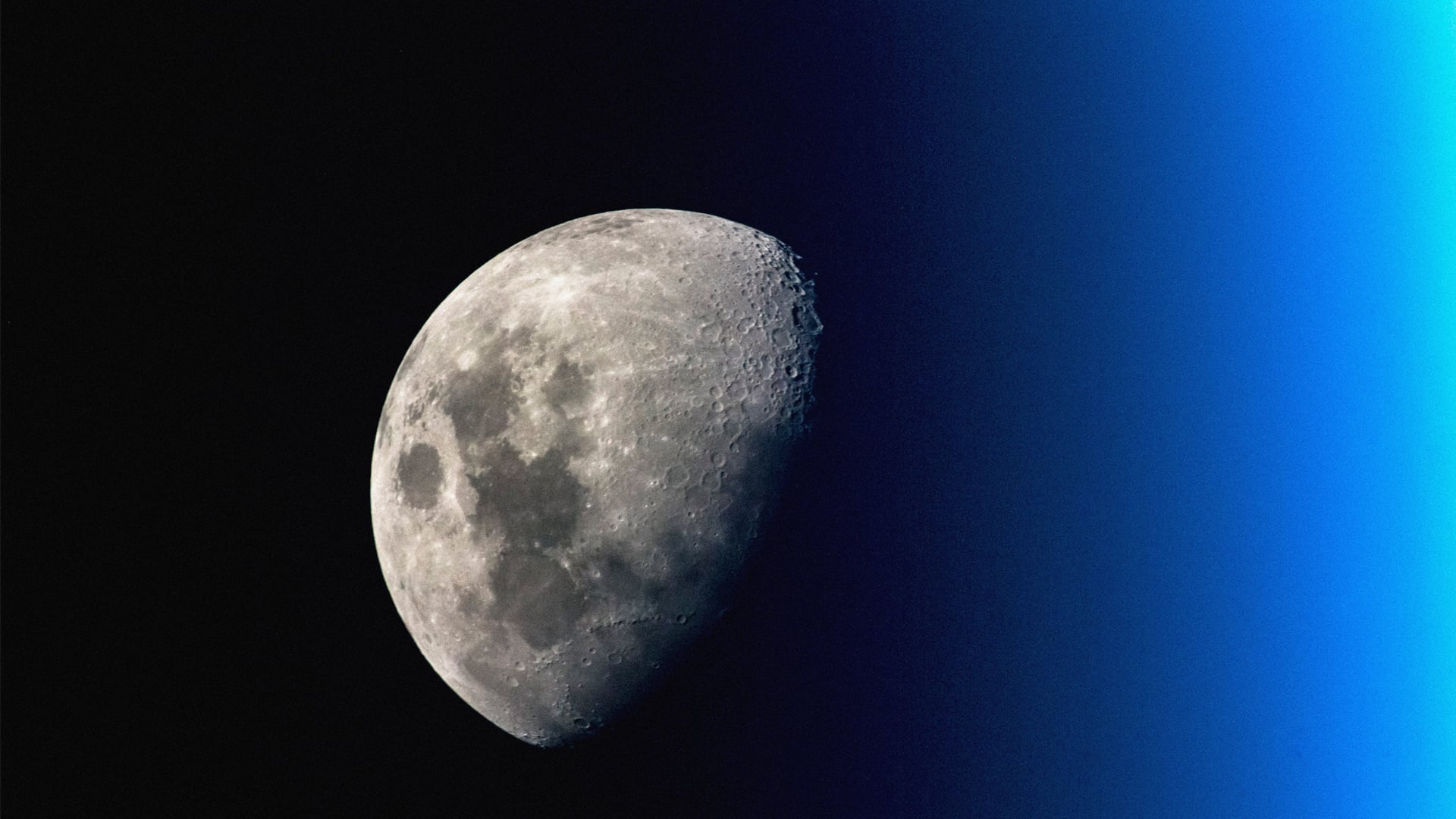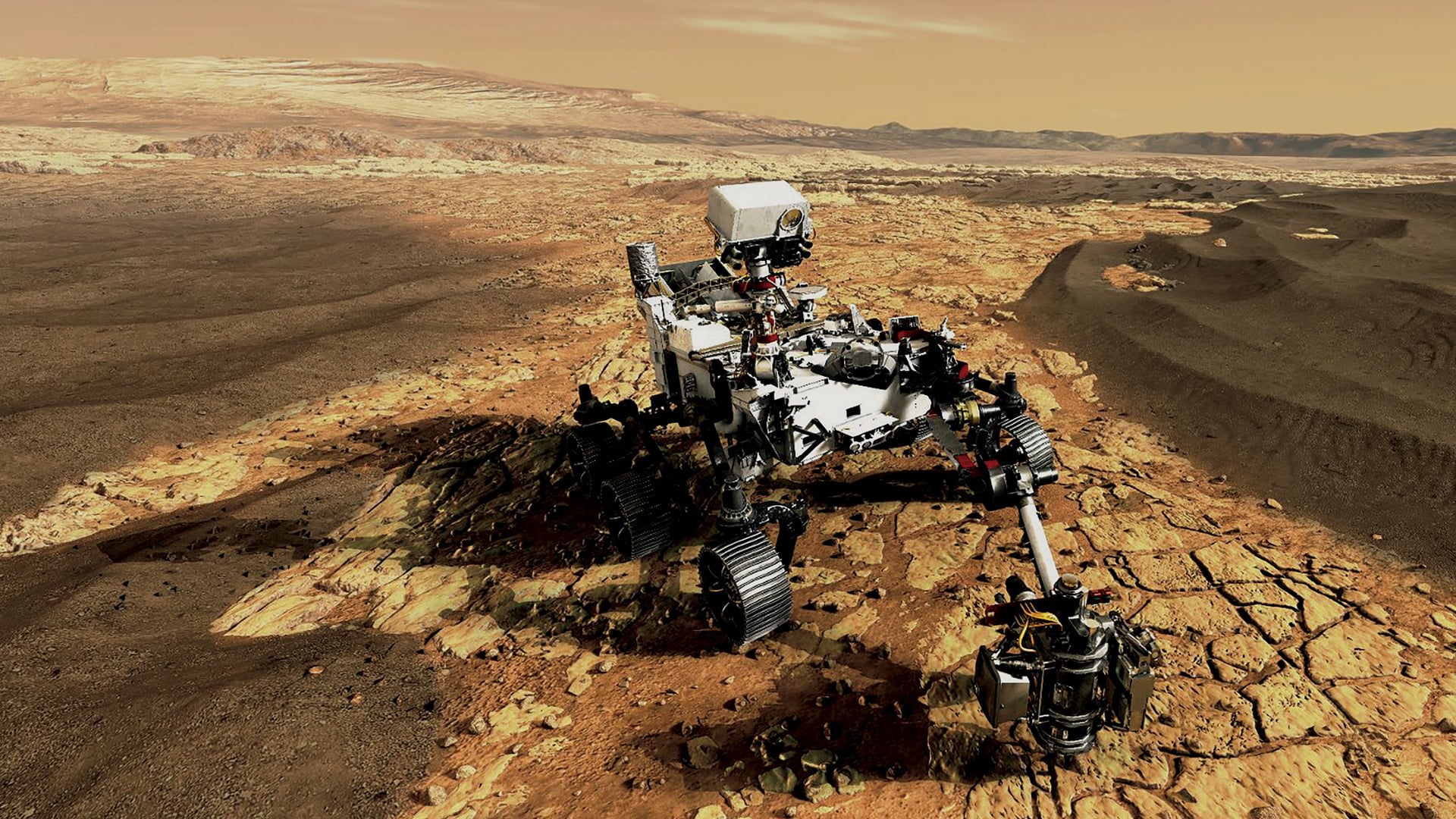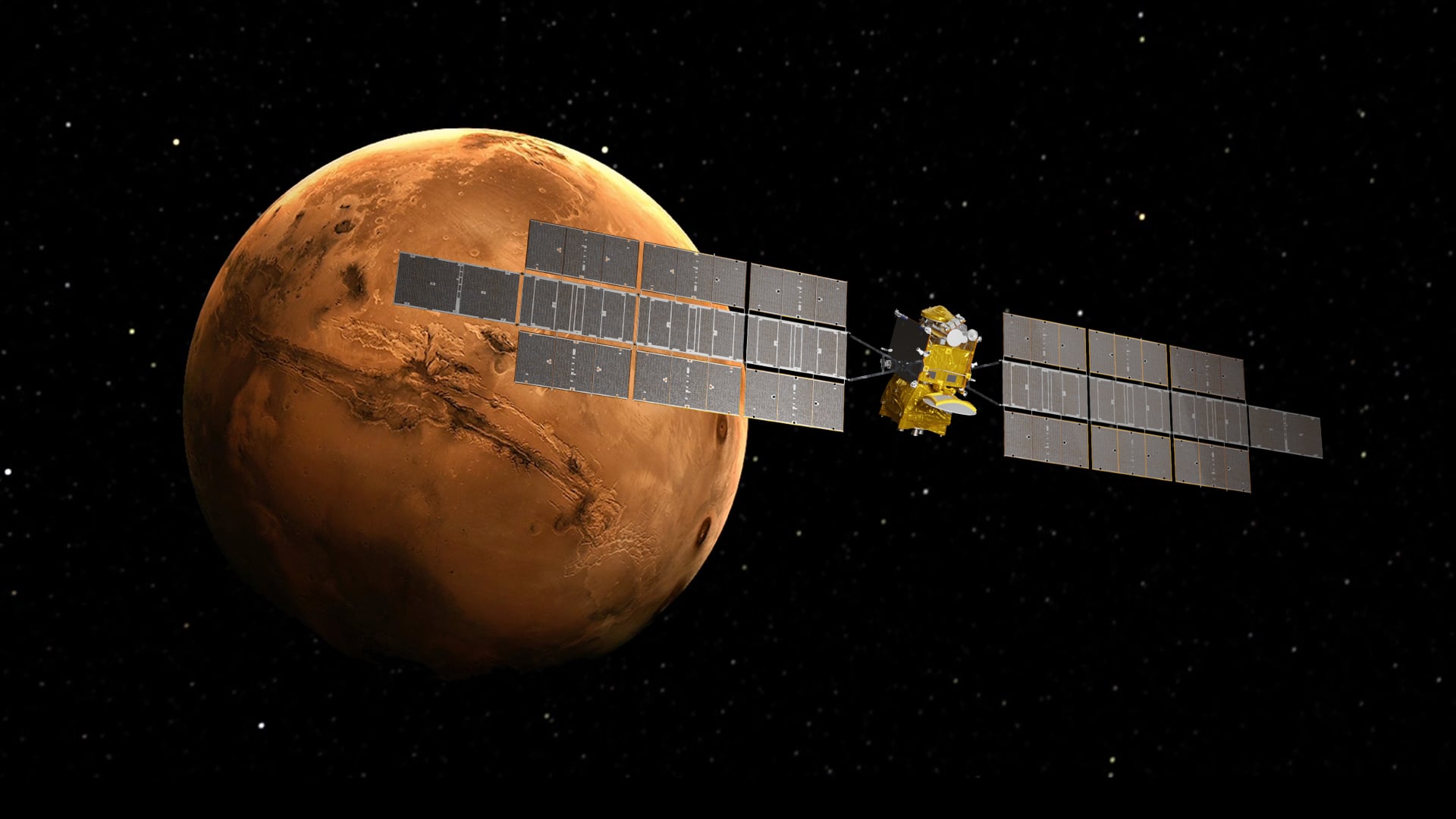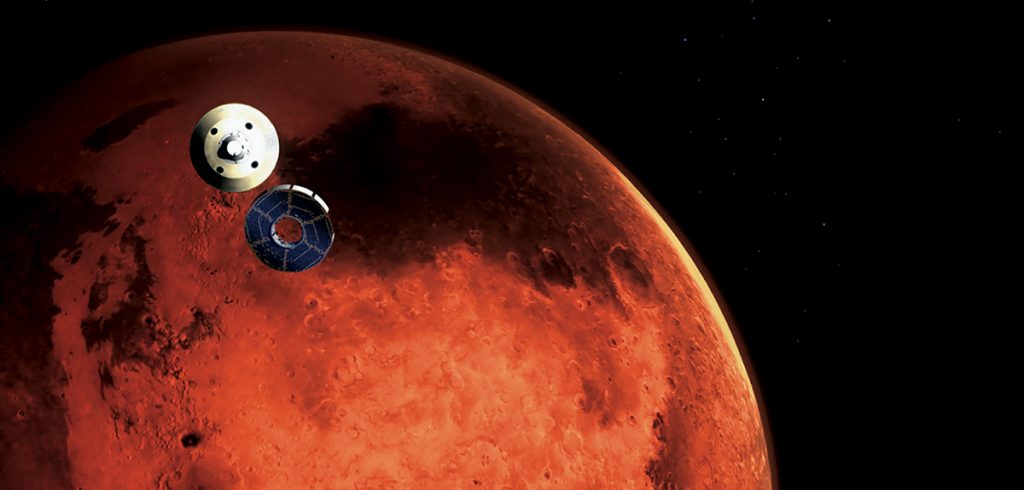In May 2021, the Zhurong Chinese rover successfully touched down on the Utopia flatlands in Mars’ northern hemisphere. Two months earlier, in February 2021, NASA’s Perseverance did so in the Jezero crater. These are the newest operational rovers on the surface of Mars. Since their arrival in Mars, both are exploring the planet.
Perseverance has recently published the on site analysis of a rock sample and is documenting with images the surface of different areas with its drone, Ingenuity – a small helicopter that makes short flights. Its pictures will enable the generation of a 3D topographic map. Both successful missions have once again placed Mars in the spotlight of extraterrestrial exploration.
Since the beginnings of space exploration, Mars has been a dreamed destination in everyone’s imagination as a habitable alternative: whether as the origin of other life forms or as a prospective second home for humankind.
With its 144 million km2 barely 28% the surface of Earth Mars offers firm ground where to build human colonies, but also has significant seismic activity, as shown by the Insight lander.
While its atmosphere is one hundredths of Earth’s, it is unbreathable (over 95% is carbon dioxide) and it is shaken by strong winds that generate dust storms that cover the planet in dark clouds for weeks or months.
It also lacks an ozone layer that blocks the sun’s radiation. Not to mention that its mean annual temperature is less than fifty degrees Celsius below zero.
Despite these evidences that defy life as we know it, Mars is still the destination par excellence in the projections of space agencies and scientific communities for a possible future colonization. And for a good reason: Mars is the only planet currently reachable by humankind that has similarities with Earth.
In addition to the presence of frozen water on its surface, these include its solid rock structure, its seasonal cycles (with four marked seasons with temperatures ranging from 20°C in the summer to -130°C in winter) and its density which, while lower than Earth’s, allows for the traversal of the Martian deserts, valleys and mountains at a brisk pace, with 38% of Earth’s gravity, during the almost 25 hours of the Martian day, gazing at the rising and setting of its two moons: Deimos and Phobos.
With this quick and dirty overview of the feasibility of living on the arid lands of Mars, we could say that it remains a coveted destination in the space field and a first rate scientific field of research.
A layoyer on the Moon has become a common theme in the planning of crewed Mars missions. Our small natural satellite
serves as the testing ground for the first
extraterrestrial human expedition in an exposed and hostile environment, with barely any gravity or atmosphere.
NASA’s Artemis program expects to send two astronauts to oursatellite in 2024 as part of its third mission: it will be preceded by afirst uncrewed mission to test the Orion spacecraft and a second,
crewed one without landing on
the Moon, to test the life support, communication and navigation systems.
During the presentation of the program, NASA gave three reasons: first, to guarantee the leadership of the USA in space exploration before its competing countries; second, to gain enough experience in crewed planetary exploration missions to take the leap to Mars; and third, to enable private American companies and their strategic partners to take part of that Moon exploration.
The Lunar Gateway is being built as part of Artemis in collaboration with other space agencies and with the participation of Spanish companies, which will serve as a port for arriving and departing astronauts.
Once on the Moon, the astronauts will learn to live and operate on a planetary body, but three days away from Earth, unlike the more than two years that a mission to Mars and back would imply: in the best distance and gravitational conditions, just a crewed trip from Earth to Mars and back is estimated to take between 400 and 450 Earth days.
The use of Gateway is not expected to take place in 2024, however. The American plan consists of taking the crew aboard the Orion spacecraft to the orbit of the Moon.
NASA is studying the possibility of Orion also docking with Gateway in that first trip, but for now, the plan would we for the spacecraft to be standalone, while it would indeed use Gateway for the subsequent Moon missions of the Artemis program.
The first few things required for the human exploration of the Moon include a fixed communications system, LunaNet, and a permanent lunar base, Artemis Base Camp, which will have the necessary communication, energy, radiation shielding, water supply and storage infrastructure to guarantee missions one to two months in duration.
Within Artemis, Gateway is an example of international collaboration: led by NASA, it will count with modules and components of the European Space Agency, the Canadian Space Agency (CSA) and the Japanese Space Agency (JAXA); and the Space Agency of the Russian Federation (Roscosmos) has also shown interest in collaborating.
In addition, NASA has implemented the CLPS program (Commercial Lunar Payload Services) as part of Artemis, in which 14 private companies have been contracted to provide scientific experiments and technology demonstrators on the surface of the Moon, in a public-private partnership that offers a corporate approach that, they estimate, is necessary to set in motion future crewed missions to Mars and acknowledges the unavoidable role played by new companies of what is known as New Space.
In this regard, and unrelated to the contracts awarded by NASA, SpaceX, in collaboration with Japanese multimillionaire Yusaku Maezawa, have announced the first all civilian flight to the Moon by 2023 a six day space tourism flight to lunar orbit as part of its DearMoon program, while Blue Origin is developing its own lunar landing system called “Blue Moon,” for the “safe, repetitive and affordable” transportation of goods to the Moon’s surface, which it expects to be able to offer to governments, scientific institutions and commercial clients starting 2024, as a first step toward the development of a lunar colony.
For their part, countries such as China, with its Chang’e lunar exploration program, and Russia, have announced crewed missions to the Moon since 2024, while India and the United Arab Emirates, among others, are working on missions to the Moon uncrewed, for now.
The progress of all of these efforts, international synergies and public private partnerships will set the stage for future crewed exploration missions to Mars.
Indeed, this first stop on the Moon, in addition to serving as a real world platform to validate future crewed missions, stresses the need for international cooperation in the field of space exploration.
The success of the Moon missions will, in turn, increase the awareness and involvement needed by current and future generations in relation to planetary exploration, as was the case in 1969 with the Moon landing of the Apollo mission.
Human Technology on Mars: the exploration missions
Perseverance is the sixth operational rover on Mars. It was preceded by Zhurong a success that turned China into the second country, after the US, to put an exploration vehicle on the planet, Curiosity (which landed in 2006 and is still operational), Spirit and Opportunity (two twin rovers that landed in 2004, with the latter being still operational) and 1997’s Sojourner, the first rover to ever function on another planet.
All of these, with the exception of Zhurong, are NASA vehicles. The European Space Agency launched a probe in 2016 aboard the ExoMars mission, but the Schiaparelli descent module did not survive the landing. The European agency is already preparing its next attempt, ExoMars 2022, this time carrying the Franklin Rosalind rover. The United Kingdom also launched a probe the Beagle 2 in 2003, but was unable to deploy its solar panels after the landing, the communications antenna was blocked and it lost contact with Earth
To these exploration vehicles we could add the Phoenix landing module, which set down on the north pole in 2008, and its subsequent evolution, the InSight mission, which did as much on Elysium Planitia on the equator. Both are fixed NASA modules with the ability to drill to study the subsoil. InSight, which is currently operational, is a geophysics robot equipped with a seismometer.
In addition to the missions that have landed, more than 40 space probes are orbiting the planet, which we have listed in edition 39 of our magazine.
The most recent ones are NASA’s MAVEN (Mars Atmosphere and Volatile EvolutioN), which orbits the planet since 2014; ESA’s ExoMars which, despite the accident with its rover, left an orbiter that has been operational since 2016; Hope Mars, a mission of the United Arab Emirates that has been orbiting the planet since February of 2021; Tianwen-1, the Chinese probe that carried the Zhurong rover; and Mars 2020, NASA’s satellite that carried Perseverance.
Announced future milestones include state run missions by the European, North American, Indian, Japanese, Russian and Chinese space agencies, in addition to private initiatives announced by SpaceX.
Some of them involve a partnership between agencies, such as ExoMars 2022 a joint ESA and Roscosmos mission and Mars Sample Return (MSR) an ESA and NASA initiative that is expected to launch in 2026.
Therefore includes the first launch from Mars with Earth as a destination, a required step to plan a crewed mission.
The MSR program includes three launches to carry out this ambitions mission: a first mission, which has already been successfully launched, has been Mars 2020 and its Perseverance rover, which is currently operating on the surface of Mars. One of Perseverance’s objectives is to obtain rock samples and store them in tubes, which it must then place in strategic zones.
The second mission, the Sample Retrieval Lander, will involve landing a platform next to the Jezero crater, where Perseverance is operating. A small rover will descend from this lander –the Sample Fetch Rover– to locate the tubes that were previously laid down by Perseverance in the strategic zones and collect them.
Once this is done, the rover will return to the platform and place them in a single container in the MAV (Mars Ascent Vehicle), found on the same platform. The MAV will need to achieve a true milestone in the space program: the first liftoff from another planet. Its objective will be to place the container, the size of a basketball, in the orbit of Mars.
After this milestone, the third and last mission of the program will be set in motion, called Earth Return Orbiter mission: an orbiter will be launched toward Mars to capture the container. Once this is accomplished, the orbiter will seal the samples in a reentry capsule and head toward Earth, where it will release it to be received by the scientists.
After the success of the first mission, Mars 2020, whose rover Perseverancelanded in early 2021 and is operating nominally on the planet, the planned dates for the other two missions are July 2026 for the launch of the lander and September of that same year for the launch of the orbiter.
This probe would enter the orbit of Mars in October of 2027, while the lander would set down on Mars in August of 2028. If everything goes to plan, the samples would arrive to Earth in 2031 a five year mission to bring back a capsule the size of a basketball.
The technical complexity of Mars Sample Return is considerable, but it is still a far cry from the requirements that the spacecraft that will carry the first humans to Mars will need to meet.
Avances tecnológicos y científicos
On going missions bring discoveries that help the scientific community better understand the pas and present of the red planet, its composition and its possible evolution. In fact, among the reasons to go to Mars claimed by the European Space Agency, the main one is tthe great interest this planet has to understanding the evolution of life on Earth.
According to scientists, Mars was once a very similar place to what our home is today, with oceans and rivers, a dense atmosphere and, probably, life. NASA’s websites regularly publish the scientific discoveries made thanks to data collected by its exploration missions –from the massive volcanic eruptions that rocked the planet in the past, altering its climate, to the evidence of water on its surface, now only present as ice, which may have harbored microbial life.
In addition to the scientific exploration data itself, each launch is still a technical challenge of engineering that brings us ever closer to a future crewed mission. In April, the MOXIE (Mars Oxygen In-Situ Resource Utilization Experiment) scientific instrument aboard Perseverance managed to produce five grams of oxygen by extracting it from the Martian atmosphere.
A true breakthrough for a future facility that is capable of harboring human life on the surface of the inhospitable red planet. Likewise, the amount of goods and consumables required to maintain a crew for three years (the approximate time that a mission to Mars would last) would require significant space atop the launch vehicle.
To address this problem, efforts are being undertaken to grow food outside of Earth, in space farms installed both in the International Space Station (ISS) and aboard exploration missions: in 2019, China succeeded in having seeds sprout on the Moon for the first time, inside a sealed container installed in the Chang’e-4 lander. Both ESA, in programs such as MELiSSA (Micro-Ecological Life Support System Alternative), and NASA, at Johnson Space Center Engineering, are working on support systems that allow the first explorers to grow their own nutrients.
So far, only China and the US have announced crewed missions to Mars by the 2030s.
We will first have to wait for the success of the crewed missions to the Moon, which will give us much more reliable clues about the now-remote possibility of putting the first human being on this planet that is as inhospitable as fascinating.
The Spanish contribution to exploration missions
Just to mention NASA’s latest missions, in MSL’s Curiosity, the Spanish industry contributed with the high gain antenna (HGAS) and the REMS (Rover Environmental Monitoring Station) scientific instrument; Mars 2020’s Perseverance, it once again provided the high gain antenna (HGAS) and the MEDA (Mars Environmental Dynamics Analyzer) weather station. For its part, InSight carried a Spanish manufactured instrument: the TWINS station that performs seismic measurements.
Just to mention NASA’s latest missions, in MSL’s Curiosity, the Spanish industry contributed with the high gain antenna (HGAS) and the REMS (Rover Environmental Monitoring Station) scientific instrument; Mars 2020’s Perseverance, it once again provided the high gain antenna (HGAS) and the MEDA (Mars Environmental Dynamics Analyzer) weather station. For its part, InSight carried a Spanish manufactured instrument: the TWINS station that performs seismic measurements.
This Spanish contribution will once again take place in ExoMars 2022, with national technology from almost twenty aerospace companies and scientific institutions, both in onboard instruments and in key components of the orbiter and rover.
In the 21st century, several Spanish companies have announced contracts for the design and construction of the Gateway lunar station, meaning that several modules will count with national technology.
The continued participation of Spanish companies, institutions and universities in NASA, ESA and Roscosmos missions is evidence of the good health of the national space sector.
